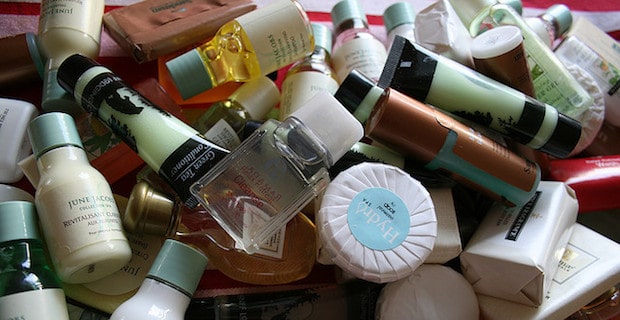
You may not be aware of the toxic brew that is in cosmetics and personal care products, including endocrine disruptors. Endocrine disruptors are chemicals that may interfere with your body’s endocrine system and produce problems, according to the National Institute of Environmental Health Sciences (NIEHS). They can have developmental, reproductive, neurological, and immune effects.
The Environmental Protection Agency (EPA) describes the way endocrine disruptors affect our bodies. Certain chemicals mimic a natural hormone and fool the body into over-responding to the stimulus or responding at inappropriate times. Some chemicals block the effects of a hormone from certain receptors or directly stimulate or inhibit the endocrine system, causing over-production or under-production of hormones. The EPA warns that a “variety of chemicals have been found to disrupt the endocrine systems of animals in laboratory studies, and there is strong evidence that chemical exposure has been associated with adverse developmental and reproductive effects on fish and wildlife in particular locations.”
Read more about endocrine disruptors
There are two main types of endocrine disruptors in personal care products: phthalates and parabens. The Campaign for Safe Cosmetics defines phthalates as “materials that are derived from the organic chemical phthalic acid.” They are mainly used as plasticizers in plastics, but are used in cosmetics and personal care products as solubulizers or an agent that something is dissolved in. The phthalate that is most frequently used in cosmetics and personal care products is diethyl phthalate (DEP). Dimethyl phthalate (DMP) is also used in some cosmetics and personal care products.
The U.S. Food and Drug Administration has not taken regulatory actions against the use of phthalates in cosmetics and personal care products. However, in 2004, the EU banned the manufacture and sale of cosmetics using certain types of phthalates. In 2005, California listed certain types of phthalates as chemicals known to cause reproductive or developmental toxicity and requires label warnings when those chemicals are present at higher than designated amounts.
Phthalates make the Environmental Working Group’s (EWG) list of Dirty Dozen Endocrine Disruptors. The EWG advises consumers to read the labels on personal care products and avoid ones that list “fragrance” as an ingredient because it can mean there are hidden phthalates present.
Parabens, parabens, everywhere parabens
The Campaign for Safe Cosmetics states that parabens are “used to prevent the growth of microbes in cosmetics products and can be absorbed through skin, blood and the digestive system.” Parabens have been found in biopsies from breast tumors in concentrations that are similar to what is in cosmetics and personal care products. Parabens are present in a wide range of products including cosmetics, cleansers, hair care products, and deodorants. Pregnant woman and young children are the most vulnerable to the effects of parabens.
There are four widely used parabens in cosmetics and personal care products: ethylparaben, butylparaben, methylparaben and propylparaben. Methylparaben and propylparaben are the most commonly used. The Campaign for Safe Cosmetics warns that parabens “mimic estrogen by binding to estrogen receptors on cells” and “ increase the expression of genes usually regulated by estradiol (a natural form of estrogen); these genes cause human breast cancer cells to grow and multiply in cellular studies.”
Read more about ingredients to avoid in skin care products
The best way to avoid them is to read labels religiously and avoid products with parabens. Look for products that say “paraben-free.” There are several cosmetics and skin care lines that do not use parabens. Origins and Aveda are two companies that state on their websites they do not use parabens in any of their products. Both carry a wide range of products such as cosmetics, hair care, skin care and deodorant. And both companies do not use phthalates in their products.
Image: Beth Taylor




